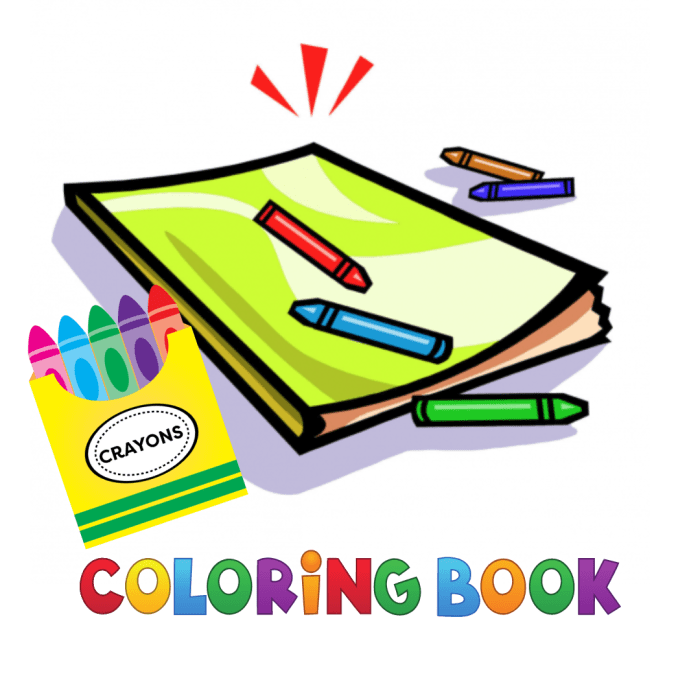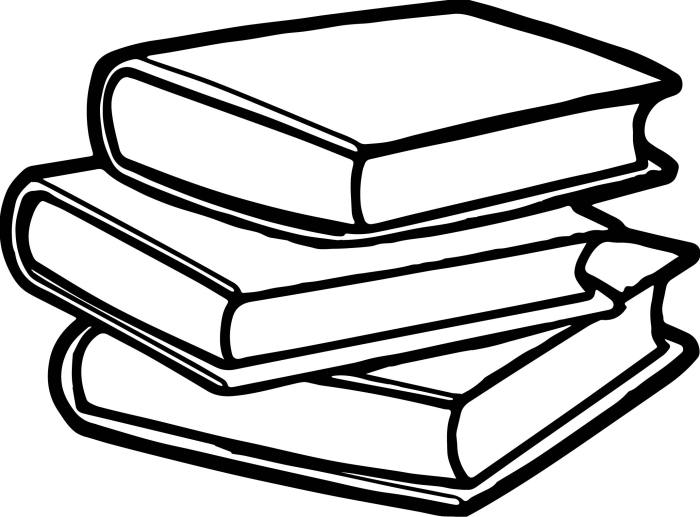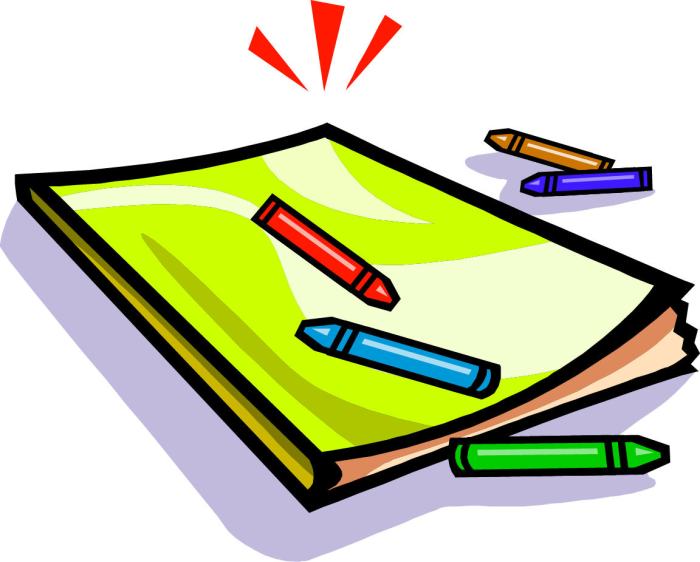Types and Styles of Coloring Book Clip Art

Coloring book clip art encompasses a vast range of themes and artistic styles, catering to diverse age groups and preferences. The choice of theme and style significantly impacts the overall aesthetic and appeal of the final product, influencing its market and target audience. Understanding these variations is crucial for both creators and consumers of coloring book clip art.
Categorization of Coloring Book Clip Art by Theme
Coloring book clip art is broadly categorized into numerous themes, each offering a unique visual experience. Popular themes include animals, encompassing everything from realistic depictions of wildlife to whimsical cartoon animals; nature, featuring landscapes, flowers, plants, and natural elements; fantasy, delving into mythical creatures, magical settings, and fantastical characters; geometric patterns, offering abstract designs and intricate shapes; and vehicles, ranging from cars and airplanes to spaceships and trains.
Other popular themes include food, holidays, and cultural motifs. The thematic variety ensures a wide appeal, allowing for specialized collections targeting specific interests.
Coloring book clip art offers a vast range of images, from whimsical animals to intricate patterns. A particularly popular subject within this genre is sports-themed art, and a prime example is the coloring book soccer ball , readily available online. These designs often provide a fun and engaging activity for children and adults alike, further expanding the creative possibilities of coloring book clip art.
Comparison of Artistic Styles in Coloring Book Clip Art
Artistic styles significantly influence the overall look and feel of coloring book clip art. Realistic styles strive for accurate representation, often featuring intricate details and shading to create a lifelike image. Cartoonish styles, in contrast, employ simplification and exaggeration for a playful and lighthearted aesthetic. Minimalist styles prioritize simplicity and clean lines, focusing on essential shapes and forms.
Other styles include intricate and detailed designs, often inspired by mandalas or other cultural art forms; and whimsical styles, characterized by fanciful and imaginative elements. The choice of style often dictates the complexity of the coloring process and the target audience.
Examples of Coloring Book Clip Art Styles and Target Audiences
| Style | Example | Description | Target Audience |
|---|---|---|---|
| Realistic | A detailed drawing of a majestic lion with accurate fur texture and anatomical features. | Focuses on accurate representation and intricate detail. May include shading and complex linework. | Older children, adults, and art enthusiasts. |
| Cartoonish | A playful depiction of a friendly bear with large, expressive eyes and simplified features. | Emphasizes simplicity and exaggeration for a lighthearted feel. Lines are typically bold and uncomplicated. | Young children, preschoolers. |
| Minimalist | A simple geometric pattern composed of repeating shapes and lines. | Prioritizes clean lines and basic shapes. Often uses a limited color palette. | Adults, those seeking calming and meditative activities. |
| Intricate | A highly detailed mandala design with numerous overlapping patterns and fine linework. | Features complex patterns and fine details, requiring patience and precision to color. | Adults, those who enjoy detailed coloring and meditative activities. |
Technical Aspects of Creating Different Styles of Clip Art
The technical aspects of creating various clip art styles involve careful consideration of line weight, detail level, and color palettes. Realistic styles often require fine linework with varying weights to create depth and dimension. Cartoonish styles typically use bolder lines and simpler shapes, while minimalist styles employ very thin, consistent lines. Intricate styles necessitate extremely fine lines and high levels of detail.
The detail level influences the complexity of the coloring process; realistic and intricate styles require more time and precision. Color palettes also vary widely; realistic styles might use a broad range of colors, while minimalist styles might stick to a limited palette of complementary or analogous colors. The choice of these technical aspects directly affects the overall aesthetic and the level of difficulty for the colorer.
Creating High-Quality Coloring Book Clip Art

Producing professional-quality coloring book clip art involves a careful blend of artistic skill and technical proficiency. The final product should be engaging, visually appealing, and, most importantly, easily printable and enjoyable to color. This section will detail the process, tools, and design considerations involved in creating such artwork.
Software and Tools for Creating Coloring Book Clip Art
The right tools significantly impact the efficiency and quality of your clip art. A range of software caters to different skill levels and artistic preferences. Choosing the appropriate software depends on your existing skill set and the complexity of your designs.
- Adobe Illustrator: A vector-based program offering precise control over lines and shapes, ideal for creating clean, scalable clip art. Its robust features allow for intricate detail while maintaining file size efficiency.
- Adobe Photoshop: A raster-based program suitable for adding texture, shading, and color effects to your line art, though it’s less ideal for creating the initial line art itself due to its pixel-based nature. It’s excellent for refining and adding visual interest to already-created line art.
- Clip Studio Paint: A popular choice among digital artists, offering a balance between vector and raster capabilities. It’s particularly well-suited for creating detailed line art and adding color and texture.
- Krita: A free and open-source alternative to commercial programs, Krita offers a comprehensive set of tools for digital painting and illustration, making it a cost-effective option.
Line Art Clarity and Simplicity in Coloring Book Designs
The clarity and simplicity of your line art are paramount. Complex, thin lines can be difficult to color without smudging, while overly thick lines can overwhelm the design. The goal is to create clean, bold lines that are easy to follow and color within the boundaries. Simple shapes and designs are generally preferred for younger audiences, while older audiences may appreciate more intricate details.
Avoid excessively thin lines, and ensure sufficient space between lines to prevent bleed-through during coloring. A consistent line weight throughout the design enhances professionalism and overall appeal.
Sample Coloring Book Page Layouts
Three examples illustrate different complexity levels in coloring book page design.
- Simple Design: This page features a single, large, easily recognizable object, such as a large, friendly-looking sun with simple ray lines. The design elements are basic shapes and require minimal fine motor skills to color. This is ideal for very young children. The color palette would be limited to a few primary colors for easy selection and minimal confusion.
- Moderate Complexity: This page might depict a scene with several interconnected elements, such as a playful cat surrounded by several simple toys or flowers. The lines are more detailed, but still easily manageable. This level caters to children with developing fine motor skills. A wider range of colors could be incorporated, encouraging creative exploration within defined boundaries.
- Complex Design: A complex page might feature an intricate pattern, a detailed landscape, or a character with many small details such as clothing folds or facial features. This design challenges older children and adults with more intricate lines and smaller spaces to color. The color palette could be extensive, allowing for sophisticated color blending and shading techniques. The page could include a range of textures, such as fur or leaves, to enhance the visual appeal and coloring experience.
Legal and Ethical Considerations

Creating and distributing coloring book clip art involves navigating a complex landscape of copyright laws and ethical considerations. Understanding these aspects is crucial for both creators seeking to protect their work and users aiming to avoid legal pitfalls. Failure to comply with copyright regulations can lead to significant legal and financial repercussions.Copyright protects original creative works, including digital artwork such as clip art.
This protection extends to the visual elements, the overall design, and even unique combinations of existing elements. Therefore, using existing artwork without permission constitutes copyright infringement, regardless of whether it’s for personal or commercial use. The implications can range from cease-and-desist letters and legal fees to substantial financial penalties.
Copyright Infringement and its Consequences
Copyright infringement occurs when someone uses copyrighted material without the permission of the copyright holder. This applies to reproducing, distributing, displaying, or creating derivative works from copyrighted clip art. For example, using a copyrighted image from a website as a base for a coloring page without a license is considered infringement. The consequences can vary depending on the extent of the infringement and the copyright holder’s response, potentially leading to lawsuits and significant financial losses for the infringing party.
Even unintentional infringement can result in legal action. Therefore, thorough due diligence is crucial before using any existing artwork.
Best Practices for Ethical Sourcing and Usage
To ensure ethical sourcing and usage, creators and users should always prioritize obtaining explicit permission from the copyright holder before using any existing artwork. This usually involves licensing agreements that specify the terms of use, including permitted uses, geographic restrictions, and fees. Many websites offer royalty-free or Creative Commons licensed clip art, which allows for specific uses under defined terms.
Carefully reviewing these licenses is essential to understand the limitations and obligations associated with using the artwork. When creating original clip art, it’s advisable to register the copyright with the appropriate authorities to establish a clear record of ownership and provide stronger legal protection.
Resources for Understanding Copyright Laws Related to Digital Artwork
Understanding copyright law can be challenging, but several resources are available to help navigate this complex area. Government websites, such as the United States Copyright Office website (copyright.gov) and similar agencies in other countries, provide comprehensive information about copyright laws, registration processes, and enforcement. Additionally, numerous legal organizations and educational institutions offer resources, guides, and workshops on copyright for artists and designers.
Legal professionals specializing in intellectual property law can provide expert advice and guidance on specific situations. These resources are invaluable for ensuring compliance and protecting both creators and users from legal risks.
